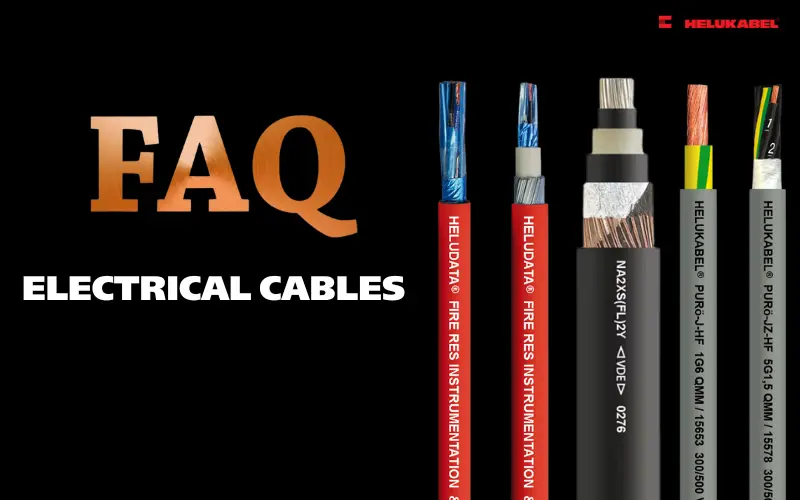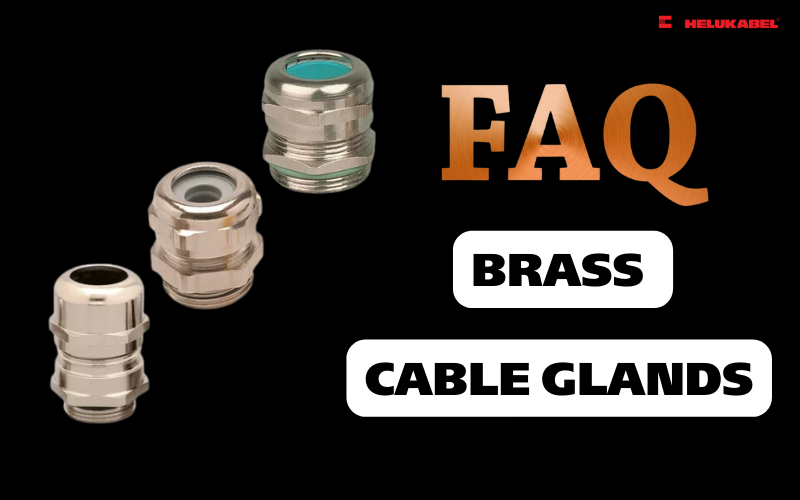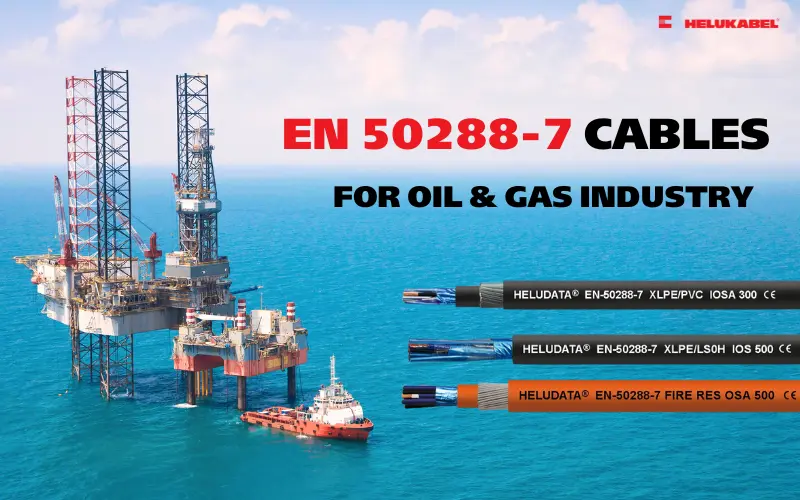What is the current-carrying capacity of cables and conductors actually dependen upon?
The conductor cross section plays a very significant role. The smaller it is, the greater the electrical resistance of the conductor.

The conductor cross section plays a very significant role. The smaller it is, the greater the electrical resistance of the conductor. A constant current flow heats a conductor with a small cross section much more than a conductor with a larger cross section. A conductor cross section that is selected too small therefore results in damage to the surrounding materials from the heat that occurs. This can lead to failure of the conductor and in the worst case – smouldering and fires.
Yet the surroundings in which a cable or conductor is laid are also important for the current-carrying capacity.
- This begins with the ambient temperature where the greater it is in the same medium (air or in the ground), the lower the current-carrying capacity.
- Additionally, the cable installation method must also be taken into account. Only cables or conductors installed in the open air have a greater maximum permissible current-carrying capacity than those laid with several in one installation channel.
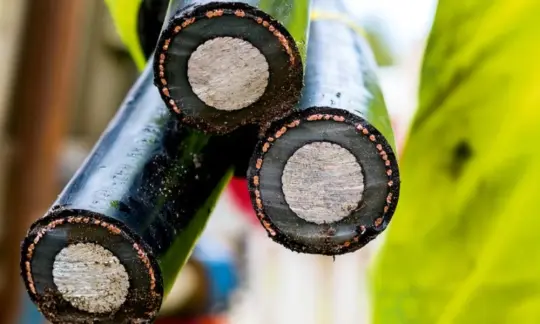
The current-carrying capacity of cables and conductors is defined in DIN VDE 0298-4, DIN VDE 0276-603, DIN VDE 0276-620 and DIN VDE 0276-1000 depending on the cable and conductor type. These standards list the current-carrying capacity of all cable and conductor types for the common ambient conditions. We at HELUKABEL GmbH technical support know these standards and have many years of experience in the area of current-carrying capacity of cables and conductors. We are pleased to help you with selecting the right cable or conductor.
Illustration: Current carrying capacity TOPSERV cables
The following values are valid for: TOPSERV 108 PVC, TOPSERV 112 PVC, TOPSERV 119 PVC, TOPSERV 109 PUR, TOPSERV 113 PUR and TOPSERV 121 PUR at the operating conditions of:
- Ambient temperature 30°C
- Installation upon or on surfaces
- Number of loaded cores 3.
Note: The max. permissible current carrying capacity depends, among other things, on the individual installation conditions and the type of installation.
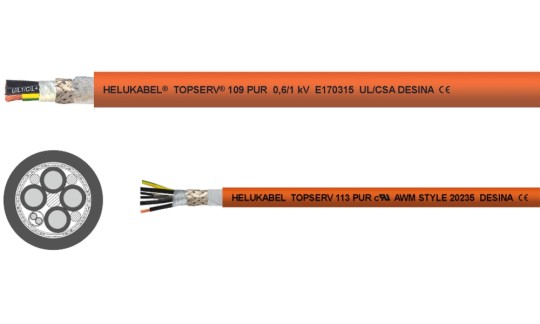
| Nominal cross section[mm²] | Max. permissible Current carrying capacity[A] |
| 1,5 | 21 |
| 2,5 | 30 |
| 4,0 | 41 |
| 6,0 | 53 |
| 10 | 74 |
| 16 | 99 |
| 25 | 131 |
| 35 | 162 |
| 50 | 202 |

